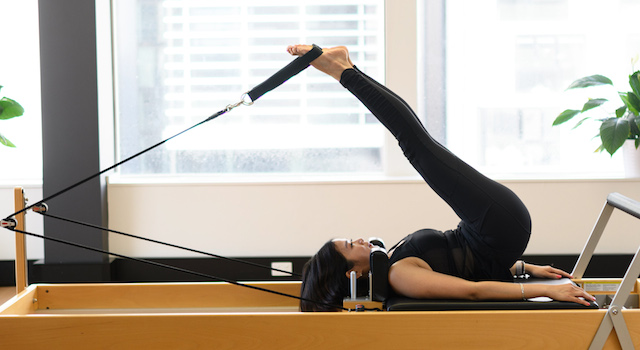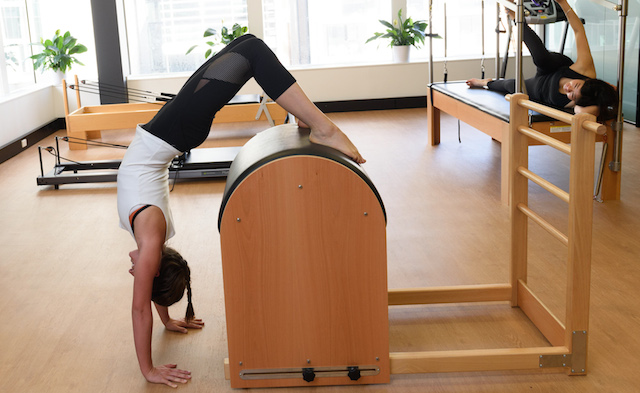We all live inside a different body. No two are exactly the same. Some are tall. Some short. They can be big- or small-boned. There are slow, heavy and fast-moving bodies. Toned and squishy bodies. Rather than pursuing a particular (and often unattainable) body type, the way to really explore our limits is to learn about our own particular type of body. The more we understand it, the more fun we can have with it!
Firstly, we need to identify the aspects of our bodies that don’t change, like the structure of our bones. A large-boned, seven-foot-tall person will remain tall their whole life, perhaps only shrinking a few centimetres in older age due to postural changes and normal disc height reduction.
But there are many other body traits that are changeable depending on how we live and what we do. The connectivity of our muscles, ligaments and tendons fit in to this category. Muscles have been described as the organs of the will – our mind can control them. We can use knowledge about the type of muscles we are born with to exploit this characteristic to make positive and lasting changes to them.
Some people’s muscles naturally hold a lot of tension. Others inherit muscles (and ligaments) that are more flexible and mobile – therapists often label them as hypermobile.
This type of label (or diagnosis) can be problematic. Firstly, while joints might be hypermobile, people are not. Labelling someone hypermobile infers that nothing can be done to alter the state – it’s just the way they were made. However, hypermobility is not a set dysfunction. It is not a disease and it does not imply something is wrong with your body! Hypermobility is just a term used to describe joints that can move beyond a normal range of motion. And in this context normal does not mean correct or right. It simply means to fall within the majority of the population – to be usual, typical, expected. To fall outside of this range does not suggest something is wrong or unhealthy.
So why are some people’s joints more mobile than others? While it might be just the way you were born, joints can also become more mobile (or hypermobile) over time due to certain repetitive movements that stretch the ligaments and the joint capsule – think gymnastics training.
Three factors determine a joint’s range of motion:
- Boney structure: how the bones are made and how the joint sockets fit together (this is the part we can’t change)
- Ligaments and tendons: the connective tissue that wraps around the joint to hold it in place (changeable)
- Surrounding muscles: these help control movement around the joint (also changeable).
People with hypermobility symptoms are known to experience particular issues including: dislocation of joints; pain during loaded activities; and stiffness in certain joints surrounding the hypermobile joint. Many also struggle with proprioception – the sense of the body parts in space, relative to one another. Because the joints lack an innate stability, they have to find it elsewhere.
Reports from clients who fit the hypermobile criteria:
I’m frustrated and fearful that my shoulder is going to “pop out” again because it feels so unstable. This fear has limited my ability to move.
While not everybody with hypermobile joints will experience these symptoms, for those who do, it is vitally important to work on strength, muscular control and proprioception in order to understand how the body moves in space.

For those with hypermobile joints, Pilates offers a beautiful technique for building body awareness. It teaches you how to move from a joint level, improves the mind-body connection, develops control over the deeper layers of the body and builds strength from the inside out.
By recruiting the deep muscles surrounding the joints, Pilates helps to create an evenness of effort throughout the body. This leads to a deeper understanding (of each person’s unique body), improved proprioception and stability. Rather than ‘reaching and lengthening’ hypermobile joints, it is important that Pilates instructors use cues to help connect and stabilise them. The focus should be on teaching an anchor point and moving from a centred place.
Rather than simple strengthening using a generic program of exercises, at Melbourne Osteopathy Sports Injury Centre we work with individualised Pilates programs to create specific strength in the body. We empower our clients to take charge of their own body without relying on the practitioner.
These symptoms won’t necessarily be experienced by everyone with hypermobile joints. However, if hypermobility is affecting your life, it is important to understand your body and find a practitioner who can identify the cues and work towards building stability.
Hannah Donaldson has a strong passion for all movement modalities and is fascinated by the body’s ability to heal itself. Hannah is particularly interested in the brain sciences with a focus on neuroplasticity, the power of words, and the empowering effect of education.
If you would like to speak with Hannah or any of our other practitioners about hypermobility, Pilates or any other concern, please feel free to ask a question or contact us on:
- Phone: (03) 9939 1289
- Email: info@melbourneosteopathycentre.com.au

